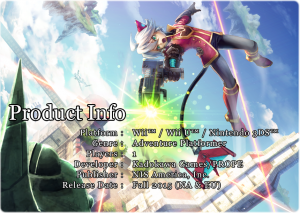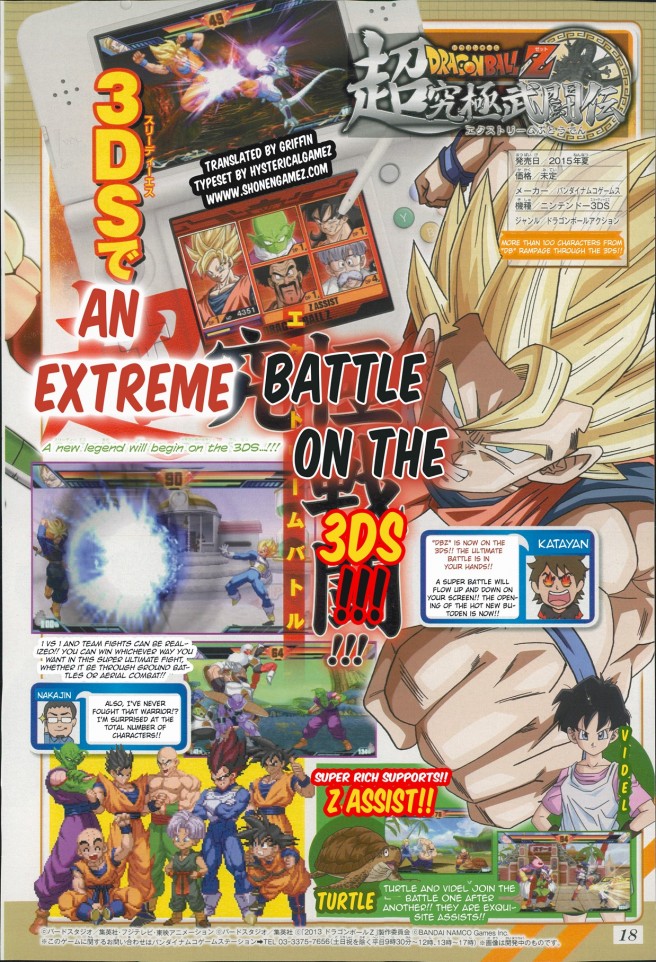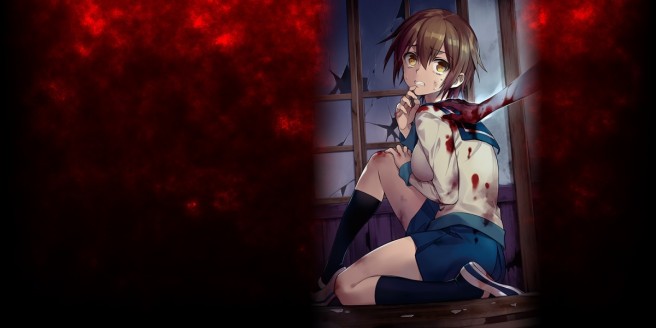Rodea the Sky Soldier off-screen 3DS gameplay
Posted on 10 years ago by Dennis Gagliardotto(@LyonHart_) in 3DS, Videos | 1 Comment
More: gameplay, Rodea: The Sky Soldier
New Puzzle & Dragons: Super Mario Bros. Edition trailer
Posted on 10 years ago by Brian(@NE_Brian) in 3DS, Videos | 0 comments
Rodea: The Sky Soldier developer interview and trailer
Posted on 10 years ago by Brian(@NE_Brian) in 3DS, Videos, Wii U | 2 Comments
More: Kadokawa Games, NIS America, Prope, Rodea: The Sky Soldier, top
Rodea: The Sky Soldier confirmed for North America and Europe, out this fall
Posted on 10 years ago by Brian(@NE_Brian) in 3DS, News, Wii, Wii U | 18 Comments
Update 2: Wii version is officially confirmed for the west, via Rodea’s English website. Check out the image below:

Update: NIS America’s PR doesn’t mention it, but the Wii version will apparently be brought over as well. Perhaps as a first-print bonus like Japan?
Rodea: The Sky Soldier is heading to North America and Europe. At its annual press event today, NIS America revealed that the company will be publishing Kadokawa Games and Prope’s title overseas. A release is planned for the fall.
NIS America intends to distribute Rodea: The Sky Soldier both physically and digitally. Additionally, both versions will be brought over – Wii U and 3DS.
Check out Rodea’s English boxart below. A collection of Japanese screenshots can also be viewed in the gallery. You’ll also find an overview after the break.
More: Kadokawa Games, NIS America, Prope, Rodea: The Sky Soldier, top
Rumor: Upcoming Theatrhythm Final Fantasy: Curtain Call DLC leaked
Posted on 10 years ago by Brian(@NE_Brian) in 3DS, Rumors | 7 Comments
Square Enix still has more downloadable tracks planned for Theatrhythm Final Fantasy: Curtain Call. And if the the latest leak from GameFAQs is to be believed, we may know what’s in store.
Here’s the supposed lineup of upcoming tracks:
BMS
Hills of Radiant Winds – Nier
Battle with Magus – Chrono Trigger
Beat Them Up! – Romancing SaGa
Apoplexy – FINAL FANTASY TACTICS
Assault – FINAL FANTASY X
Shadowlord – Nier
Boss Battle 2 – Chrono Trigger
Devil Lord Confrontation II – Romancing SaGa 3
Struggle to the Death – Final Fantasy Legend II
real Emotion – FINAL FANTASY X-2
FMS
Into the Thick of It – Secret of Mana
Birds in the Sky, Fish in the River – LIVE A LIVE
Meridian Child – Seiken Densetsu 3 (Mana series)
Corridors of Time – Chrono Trigger
This wouldn’t be the first time that DLC has leaked ahead of time. We should know if the above list is legitimate in a couple of weeks!
Another Dragon Ball Z: Extreme Butoden scan
Posted on 10 years ago by Brian(@NE_Brian) in 3DS, Images | 2 Comments
Another scan has come in for Dragon Ball Z: Extreme Butoden. In it, we see that Master Roshi’s turtle and Videl will be included as support characters. Support characters can be accessed at the tap of an icon.
Etrian Mystery Dungeon – Dancer trailer
Posted on 10 years ago by Brian(@NE_Brian) in 3DS, Videos | 0 comments
Corpse Party: Blood Covered …Repeated Fear teaser site open
Posted on 10 years ago by Brian(@NE_Brian) in 3DS, News | 1 Comment
5pb. opened a teaser site for Corpse Party: Blood Covered …Repeated Fear today. Access it here. There’s not much to see currently, but that’s how things go with teaser sites!
New Theatrhythm Final Fantasy: Curtain Call DLC out today, more on March 5
Posted on 10 years ago by Brian(@NE_Brian) in 3DS, News | 0 comments
ValueError thrown
Path cannot be empty



















